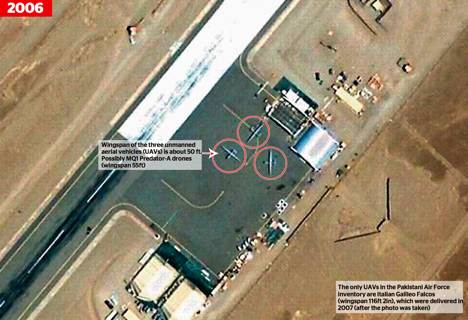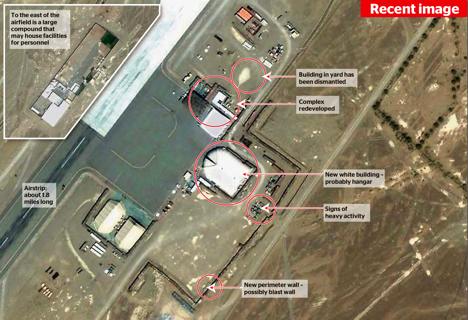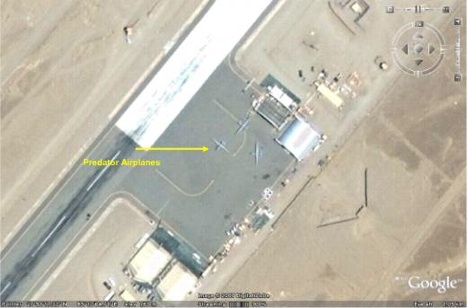- FlickrExport 3: Connected Flow’s FlickrExport 3.0 for Aperture and iPhoto has finally come out of beta. It gets a mention here because among the improvements we get:
– GPS track log integration – download your GPS tracks and connect them with photos as you upload them (supports GPX and NMEA).
– Geolocation presets – store a location and recall it with one click.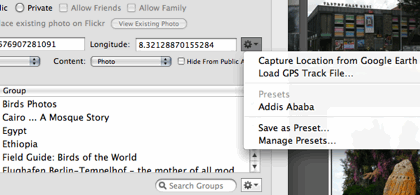
You can also set the location from the current view in Google Earth. All this is useful if you want to make a quick and dirty geotagged set on Flickr, but the georeferencing feature does not save the location to Aperture’s database (and I presume not to iPhoto either) so I won’t be using it, in favor of georeferencing solutions that change the metadata of the original image.
- Google Earth tours: Google Earth Design‘s Richard Treves takes you through the required steps for making a simple tour in Google Earth 5. Meanwhile, Google Earth Blog has a nice roundup of some well-made tours.
- China to launch own virtual Globe: China Economic Net reported earlier in February that China’s State Bureau of Surveying and Mapping is going to build a domestic counterpart to Google Earth. According to the article, it will be censored, but carry more high resolution imagery of China than Google Earth. Just like India’s Bhuvan, then.
- Imagery Update: Google Earth Blog and Google Lat Long Blog alert us to the latest Google Earth imagery update.
- SketchUp for Google Ocean: An update to Google SketchUp 7 lets you place models underwater in Google Earth 5. Here’s how.
All posts by Stefan Geens
Geostatus updaters compared: GMap-Track, Google Latitude
This blog has been using Cristian Streng’s GMap-Track to drive the little tracking map in the top right corner of the page for some time now. I used to update it periodically via my GPS-enabled Nokia N95, until I lost that phone a few weeks ago. Updating wasn’t cheap either, as most of the time I was in a location that required roaming, and roaming data plans are still around $5 per megabyte out of Europe and the Middle East, which is highway robbery.
I considered switching to Google Latitude. Latitude does let me update my location manually via a web browser, if that is the cheaper option (or if my phone goes AWOL), but it doesn’t give me what I need in return: A public widget that I can embed on my website.
The solution: Asking Cristian if he could add the option to update GMap-Track via the browser. A few days later, that functionality is now in place, so I’ve re-enabled the location map on Ogle Earth. An added bonus: Unlike Latitude, GMap-Track can use the Google Earth web client plugin.
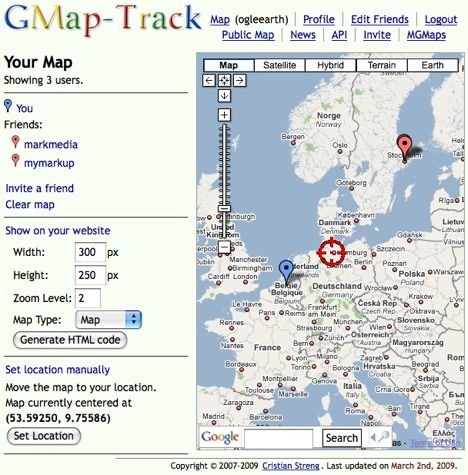
Letting your mobile phone update your location at all times can be useful among close-knit groups of trusted friends in urban settings looking for the next place to congregate. Google Latitude is perfect for that. But frequent travelers will mostly want to make periodic user-initiated updates from interesting places — a geographic version of the Facebook status update — and publish that information as a widget. And that is just what GMap-Track delivers.
About those missing Predator drones: It wasn’t censorship after all
Well, you should never trust the media, should you? I’ve just been on the phone with a Google spokesperson, who was keen to correct a number of mistakes in the reporting of the London Times and Pakistan’s The News; these articles had led me to conclude that Google had censored imagery showing Predator drones deployed in Pakistan, but now I think was wrong; Google says there was in fact no intentional redaction of imagery containing Predator drones at Shamsi airbase from Google Earth, nor was it ever asked to remove this imagery by the US government.
So how can this square with the apparent removal of the imagery from DigitalGlobe’s inventory, and its absence from the recently introduced historical image archive accessible in Google Earth 5?
Let’s take one item at a time:
The DigitalGlobe imagery of the Predator drones at Shamsi was not taken in 2006, as both the London Times and The News contend, but in 2004, says Google. It was visible in Google Earth from 2006 onwards, until its recent replacement by imagery taken in 2007. When this replacement happened is not something the Google spokesperson was able to pinpoint, but it would not have been in the last week or two, as there hasn’t been a general dataset update in that time. Thus The News was also inaccurate in stating that both the 2004 and 2007 imagery was still available on Feb 18, 2009, when in fact only the 2007 imagery would have been visible at the time of the article’s publication.
The DigitalGlobe store corroborates Google’s explanation — there is indeed an image of Shamsi base available for purchase that was taken on July 2, 2004, and here is the low-resolution preview. (You can also find it with the DigitalGlobe default layer in Google Earth.) You can’t actually see the predator drones in the preview, as the resolution is too low, but absent me dropping a few grand to get my own personal high-resolution copy, I’m willing to give Google the benefit of the doubt on this, especially as the imagery will be available for free eventually (see below).
This misattribution of the date of the drone imagery to 2006 instead of 2004 is also the reason why I didn’t find the imagery in the DigitalGlobe archive while researching my original post — it was there all along, but listed under 2004.
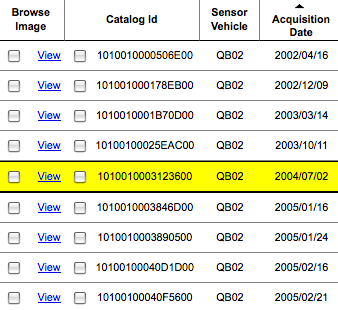
Another, more interesting implication is this: Unlike what the mainstream media has reported until now, we can now infer that there were US Predator drones deployed on Pakistani soil as early as 2004, rather than as early as 2006. Whether that makes things worse or better I’ll leave to others:-)
What about the the fact that the imagery is missing from the recently introduced historical image archive? The catch here is that the archive is indeed “recently introduced”, says Google, and that means that not all the imagery available to Google has made it into the archive yet. According to Google, the rollout concentrated on making historical imagery for the most populated places available; Baluchistan is clearly not such a place. I was assured that the imagery from 2004 showing the Predator drones is in Google’s possession, that it is in the queue for inclusion in the historical archive, but that Google just hasn’t gotten around to it yet because of the backlog. Since that explanation is also a promise:-), it will be easy enough to verify this claim in due time.
So where does the blame lie for what is now most likely to be a faulty conclusion in my original post? Both the London Times and The News are guilty of misreporting the dating of the Predator imagery in their possession, and The News most likely misreported when the imagery was visible in Google Earth. But I was wrong to take their reporting at face value, especially as Ogle Earth gleefully lambasts mainstream media for their general cluelessness on most other occasions. I also assumed that the new historical imagery database in Google Earth 5 was a complete catalog of past imagery visible in Google Earth, when it is not (yet). Finally, Google could perhaps be a little bit more pro-active about quashing media errors on their own blog (like this), so that this blog doesn’t have to blunder around in the dark so much until the errors get so egregious that a Google spokesperson is forced to call me up to set the record straight. Otherwise, I might just turn that into a reporting tactic:-)
Links: Google Earth for infighting, 4D Utrecht, Geology KML, anyone?
- Google Earth, infighting tool: Seriously, AFP is reporting that “Hamas claims Palestinian rival spied for Israel” using Google Earth. In a press conference, a Hamas intelligence officer is claiming Fatah operatives have confessed to mapping out Gaza landmarks such as “mosques, institutions, tunnels or workshops”, “with the help of the Google Earth programme,” sending the information to Israel so they can better bomb those spots. A couple of observations:
- Israel is highly unlikely to need the help of a Google Map to figure out where the mosques are in Gaza.
- The Fatah aide is probably right when he says, “This is part of a plan being carried out by Hamas leadership in Damascus to push back the Cairo dialogue” (reconciliation talks between Fatah and Hamas).
- I seriously hope that the people that have confessed were not somehow involved in a humanitarian mapping project, such as OpenStreetMaps in Gaza, and have now been caught in the paranoia of post-conflict retribution.
- 4D Utrecht: Michael Quist writes:
I’ve modelled a large portion of the city of Utrecht. In this city there will be very big changes in the next couple of years. I’ve used the timeline function in GE to show what the changes will be.
It’s a 25MB KML file, but an interesting use of the timeline.
- Google Geology? Ron Schott over at Ron Schott’s Geology Home Companion Blog makes the case for a comprehensive KML geology layer.
- Atlantis Unbound? Kurt’s weblog thinks that the blame for the Atlantis debacle should be shared little by Google, for not making it clear what the data actually represents:
Since Google picked up the data, I really think it is Google’s responsibility to put in a link in Google Earth that explains what the ocean bathymetry is all about. I can think of several marine scientists who would happily write a draft of an explanation with Google at no charge to Google.
(As an aside, the reason a ship was checking out the ocean floor just there was to see if it was a suitable spot for nuclear waste disposal!)
- Map Channels Version 3: Online mapping tool Map Channels has just had an extensive overhaul, adding support for spreadsheet data, GeoRSS, and marker clustering among other things.
- Navigating underwater: Using Google Earth blog has some tips for how to best navigate underwater in Google Earth.
- Belgeoblog: Belgian Google Earth blog Belgeoblog is back.
- 3D Collision debris: Over at Barnabu, James Stafford’s been performing his usual programming wonders. The latest: A Google Earth plugin version of a space debris tracker for the satellite collision over Siberia on February 10.
Censorship in Google Earth: The case of the missing Predator drones
[Update 24 Feb: It turns out that there was no censorship by Google after all. Please read this follow-up post for the reasons why.]
On February 12, 2009, Chairwoman of the US Senate Intelligence Committee Senator Dianne Feinstein said at a hearing, perhaps unwittingly, that the CIA’s unmanned MQ-1 Predator drones used to hunt Taleban and Al Qaeda cells on the Pakistan/Afghanistan border were deployed from a base in Pakistan. (Pakistan quickly denied Feinstein’s account, the Wall Street Journal would later report, but both papers got off-the-record confirmations of the accuracy of Feinstein’s statement from senior intelligence sources.)
On February 17, The Times of London ran a story alleging that the US was flying MQ-1 Predator drones out of Shamsi airbase in Pakistan’s southwestern province of Baluchistan. Exhibit A in its investigation was the delivery of a special kind of fuel to the base, as revealed by the website of the Pentagon’s fuel procurement agency. There was no mention of satellite imagery in the article.
On February 18, Pakistan’s The News reported it has seen satellite imagery from 2006 showing what is most likely three US Predator drones deployed at a remote air strip in southwest Pakistan. It also reported that the imagery was still available in Google Earth (though the web version of the story does not make any imagery available).
Such revelations are an embarrassment to the Pakistani government. The drones — used to hunt down Taleban and Al Qaeda cells on the Pakistan/Afghanistan border — are unpopular with Pakistanis, and the Pakistani government has repeatedly said it does not allow the US to base the drones on its soil. The US has likewise denied it has operated drones out of Pakistan, Feinstein notwithstanding. The imagery from 2006 contradicts these denials.
On February 19, The Times of London ran a follow-up article that made the 2006 satellite image available — it clearly shows three drones deployed at the airbase, with dimensions that fit that of the Predator. It also reported that the imagery was no longer available on Google Earth.
Click for full-resolution version
That image, when compared to the current DigitalGlobe image available in Google Earth taken on March 30, 2007, clearly shows the same airbase (Google Earth placemark), though with some significant new construction:
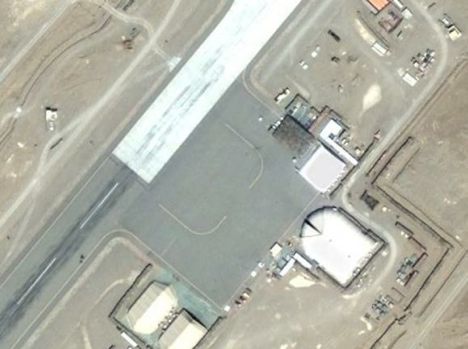
The Times makes the same DigitalGlobe image available, annotated:
Click for full-resolution version
Note that the Times’s image does not carry the Google Earth logo, and has a higher contrast that the Google Earth version. Without being conclusive, this suggests the Times’s source for the imagery is not Google Earth, but perhaps a direct purchase from DigitalGlobe’s online store, which has the same imagery available as that visible in Google Earth.
That’s how far the mainstream media took the story. What have the bloggers had to say about it, especially regarding the apparent act of censorship in Google Earth around Feb 18?
On Google Earth Community, spotter2 makes a good case that the imagery from 2007, while not showing drones, does show evidence of continued drone deployment, based on the shapes and sizes of the specialized shipping containers used to transport predator drones.
Over at IMINT & Analysis, Sean O’Connor notes that the new construction between the imagery from 2006 and 2007 suggests that the base is intended for longer term use:
The US government’s claim that the facility is no longer used may or may not be accurate, either: the large hangar visible at the bottom of the image is a new addition since 2006, and the two clamshell-style tent structures to the left of the image are common US military structures found at various operating locations throughout the Middle Eastern theater of operations.
When it comes to the question of censorship in Google Earth, however, the smoking gun is to be found on the Pakistani blog Teeth Maestro, which has posted a screen capture from Google Earth, proving that the application did indeed once show the 2006 imagery with drones:
Click for original-resolution version
So what happened? Where did this imagery go?
[Update 24 Feb: It turns out that there was no censorship by Google after all. Please read this follow-up post to find out how that’s possible.]
Until the release of Google Earth 5, it would have been hard to confirm such a case of intentional censorship by Google — older DigitalGlobe imagery in Google Earth periodically gets replaced by newer imagery, and thus 2006 imagery would eventually be replaced by 2007 imagery. Only the timing would be suspect.
But with Google Earth 5, we now have access to a historical archive of DigitalGlobe imagery from the past several years, using the historical imagery time slider. Older imagery should still be visible in Google Earth, but in the case of the region around Shamsi airbase, there is no record of high resolution imagery taken sometime in 2006:
And yet we have a screenshot of such imagery once having been available in Google Earth.
I went looking for this imagery in DigitalGlobe’s online store. The one previous time that there was a clearly documented case of Google Earth removing imagery at the request of a government (Basra, Iraq, in 2007) the imagery remained visible in the DigitalGlobe’s archives. No such luck this time, however. The DigitalGlobe ImageFinder service betrays no trace of any imagery taken by DigitalGlobe’s satellites of the airbase in 2006:
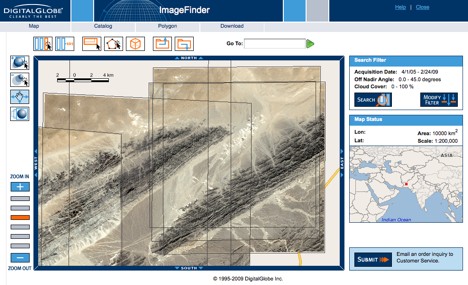
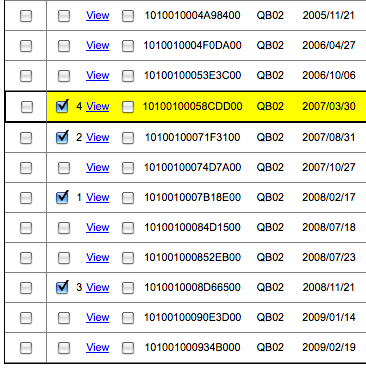
(The two references to 2006 are for imagery that does not cover the base.)
We can therefore conclude that the satellite imagery from 2006 showing drones has not only been removed from Google Earth, but also from the source of Google Earth’s imagery in this part of the world, DigitalGlobe.
The sad but inevitable conclusion is that we have here another clear case of documented censorship in Google Earth — though it remains a mystery by what mechanism this censorship occurred: Did both Google and DigitalGlobe separately receive a request from a government (presumably the US, but possibly Pakistan) to remove this imagery from public scrutiny, and comply, or is there a contractual obligation/legal obligation on the part of Google to remove imagery from Google Earth if DigitalGlobe removes it from its product list? Did DigitalGlobe make a mistake in publishing the 2006 imagery available in the first place, considering that the US military has “shutter control” of the satellite’s cameras? Or perhaps (and I’m merely speculating), since the Predator drone operations are run by the CIA and not the US military, were shutter control orders somehow not properly relayed via the usual channels?
None of this changes the fact that removing imagery which has already been scrutinized by the media is an extraordinarily pointless act. I hope this implies that Google’s removal of the image was the result of legal or contractual coercion, rather than voluntary compliance with a non-binding request.
Links: Italy censorship obfuscation, iPhoto & GPS, still no Atlantis
- Italy censorship watch: The eagle-eyed Michael Unterleitner writes in to point out a blatant case of censorship obfuscation — where censors try to hide that they are censoring imagery by replacing real imagery with fake imagery, instead of just pixellating. The huge airbase to the south of Aviano Italy is clearly shown in Google Earth/Maps, which uses DigitalGlobe satellite imagery:
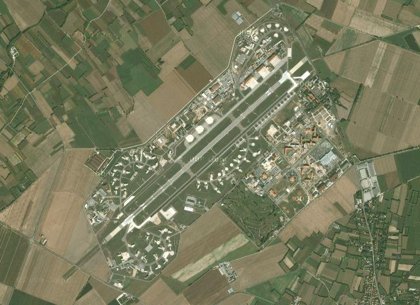
The same exact view in Microsoft Virtual Earth, which uses aerial imagery from the provider TerraItaly:
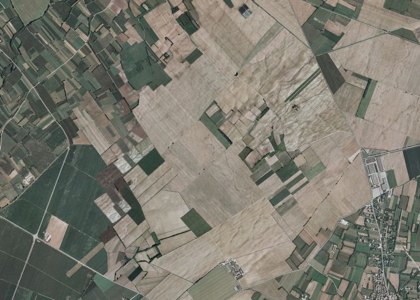
Note how the end of the runway sticks out at the bottom left of both images, indicating that no, the TerraItaly imagery is not just old imagery from before a runway was built. So: How can we possibly trust anything else by TerraItaly if any field of theirs could be fake? Who could possibly want to buy any of their imagery?
- iPhoto & GPS: Craig Stanton, maker of the very useful Geotagger Mac application, has been rooting around in the innards of the latest iPhoto, checking out how the new Places feature works. He’s discovered something very interesting in the application’s database: Evidence that Apple has been working on a GPS tracking feature:
The tables are called SqGpsTracks and GpsTracksEventsJoin. What this tells me is that Apple were working on the ability to link a GPS track with an iPhoto event for people that may have a GPS Datalogger and a camera as separate devices. iPhoto would then be able to match up the time a photo was taken with the GPS log and work out where the photo was taken.
- No Atlantis (officially): The Press Association has a Google spokeswoman confirming the obvious. I guess the silver lining is that plenty of laymen and women got educated about bathymetry as a result of this story.
- NASA publishes a US carbon dioxide KML layer: NASA publishes a US carbon dioxide KML layer which is also viewable as a very complete browser-embedded Google Earth tool.
- Virtual Philadelphia: An incredibly high-detail rendition of Philadelphia, based on “gigabytes of aerial photos, street images, laser scans and geodetic measurements.” Windows only, though. (Via Digital Urban)
- Augmented reality proof of concept: I’ve been wanting to try this out before reporting on it, but just haven’t found the time. More at Google Earth Blog and Digital Urban.
- Sensor network data aggregator tool: Oceanic sensor network guru Jeremy Cothran writes:
Wanted to relay that I’ve been experimenting with VMware and the VMware player and have created a virtual instance/image/appliance of the ‘Xenia’ development and associated scripts and database (xeniavm).
The 1.5 GB rar-compressed (6 GB uncompressed) VMware image/appliance is available for download.
This vmware image was developed on top of the FOSS geospatial VMware image (geostatistics package which includes ‘R’) available here (appliance description) – thanks to Ricardo Pinho.
While the Xenia scripts do not directly utilize/interact those included applications in the gisvm image at this time, I thought they represent the best existing collection of FOSS geospatial software for future development.
I’ve created wiki documentation relating to the vmware instance with the starting link here.
The documentation details some getting started info and how to add your own imported data files formatted as ObsKML and get the immediate benefit of your observation data aggregated, restyled and reformatted into a variety of formats and services listed below.
* Google Earth/Maps, Latest ObsKML, Styled KML
* time-series graphs
* GeoRSS
* html table styling
* convert from ObsKML to other formats (CSV,shapefile)
* Data source files – zipped ObsKML and SQL
* Latest 3 day database and julian weekly archive databases
* DIF SOS
* Flow/Feed status and notificationAnyone interested in providing feedback or contributions(development or data) regarding the image/development please contact me.
Media Stupidity Watch: No, it’s not Atlantis
British Papers have just managed to outdo themselves in terms of scientifically illiterate reporting. The Sun: Is this Atlantis?
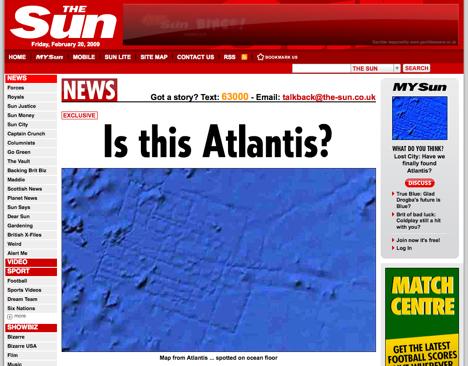
The Telegraph: Google Ocean: Has Atlantis been found off Africa?
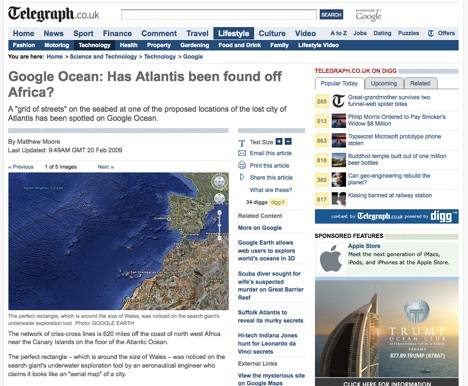
For the record, here is the spot in Google Maps:
So what is the structure? Actually, there is no structure there. It’s merely a grid of higher resolution sounding data amid a lower-resolution dataset, taken from a ship surveying the area.
The new Oceans dataset for Google Earth is the SRTM30_PLUS dataset, whose homepage clearly states:
Ocean data are based on the Smith and Sandwell global 1-minute grid between latitudes +/- 81 degrees. Higher resolution grids have been added from the LDEO Ridge Multibeam Synthesis Project, the JAMSTEC Data Site for Research Cruises, and the NGDC Coastal Relief Model. Arctic bathymetry is from the International Bathymetric Chart of the Oceans (IBCAO) [Jakobsson et al., 2003].
You can see higher-resolution sounding ship paths in many places on the new dataset, especially around Antarctica, where the default resolution bathymetry is quite coarse. For example:
Especially outrageous is that for the articles in question, the only interviewed person is an Atlantis “expert” who finds the findings “fascinating”, whereas one phone-call to a serious marine scientist would have sufficed to pour cold water on this story.
I don’t know whether the Sun’s Virginia Wheeler and Rhodri Phillips are merely stupid, lazy and scientifically illiterate reporters, or whether they set out to deceive their readership. The fact that Matthew Moore at the Telegraph rewrote the story uncritically is just incredibly embarrassing.
